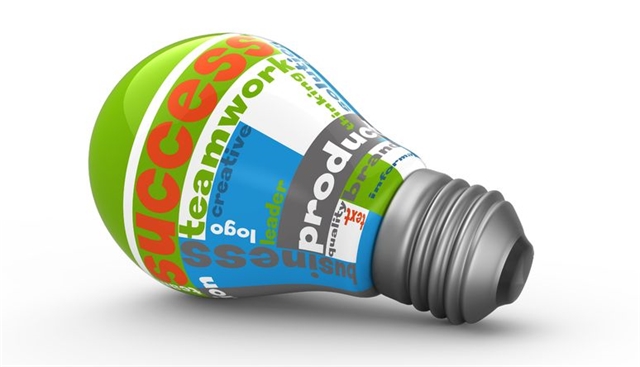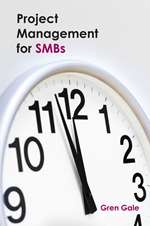Trusting your gut rarely works
Many small and medium businesses experience issues developing new products. While they are likely to know their market well, they often lack the disciplines to determine how long it will take to bring a new product to market and how much the development of the product is going to cost. There’s also a tendency to work on gut feel, where the potential for payback is concerned, rather than a realistic look at what potential sales and support income might be.
While there are lots of very public examples of small companies following their gut and making millions, less publicised are the much larger number of companies who have crashed and burned as a result of this.
The irony is that the message for the need to have a business plan to launch a micro business, seems to have struck home, but it’s the next stage of growth that tends to catch companies out, where that initial level of discipline has been forgotten in the afterglow of early success.
So how do you develop new products?
- Before you think about developing new products, first of all and most important, you must devise a strategy. Without a strategy every product initiative is so much chaff in the wind. It’s easy to get pulled from pillar to post by the latest conversation with a customer or supplier. Strategy can be devised by something as simple as a SWOT analysis. You should also be asking where and how do you make money now, what does the future hold and where do you want your company to go?
- New product ideas usually aren’t in short supply. They often come from customers asking for things you don’t currently sell or for additional features or you may see what your competitors are doing and want to match or better that.
- In assessing a product idea, the first test is if the new product conforms with your strategy. If it doesn’t, this doesn’t mean that it can’t be approved, just that the justification for going ahead with developing it will have to be extremely strong.
- You then need to build a business case. This will include:
- Defining the basic product specification
- Estimating what it will cost to deliver
- The cost of development of the product or prototype
- Production costs
- Marketing and promotion costs – will you need to employ a new sales force and advertise widely?
- Don’t forget to include any ongoing costs that will increase as a result of this product development
- Estimation of the timescales to deliver the product
- Assess the risks associated with developing and productionising the new product
- Do you have the skills and experience to develop the product – will you need to recruit or outsource?
- How quickly is the market moving – could your product be obsolete by the time it reaches the market?
- Could legislative or economic changes affect the market for this product?
- Could a big player in the market or an overseas competitor launch a similar product at a lower price?
- Determine the payback
- You will need to carry out market research for this and assess what your competitors and potential competitors are doing
- You’ll need determine a price per unit that you believe you can sell the product for
- You’ll need to determine the annual sales volumes that you believe you can achieve, based on the marketing effort that you included in your costs
- Don’t forget to include any ongoing income generated by the new product e.g. support contracts
- At the end of this process you should have a formula that will tell you if the product development is worth proceeding with
- This process usually engenders a sense of realism and while it may not stop a product being developed, it will quite often cause a re-think in terms of the scope of the new product, in order to be able produce something that will have a payback
- You then need to set up and run a project. Many new businesses make the mistake of having staff with little project management expertise run a development project. This is a big mistake and can have a disastrous effect on the whole process. Solid project management skills make a big difference and even if you don’t want to buy these in, you may consider setting up a training and mentoring arrangement with a project management specialist
- Broadly the project will include the following phases:
- Design the product (or prototype)
- Build it
- Test it
- Productionise it
- There may be one or more procurement processes running as part of the project, to either supply part of the build or to productionise a prototype. It is important to choose your suppliers in a timely manner, make sure that they are involved in the development and that production volumes for launch and after are agreed and tuned as the development moves forwards.
- It’s important to maintain good communication and also to implement a strict change control regime, both within your project and with your suppliers, to avoid the situation where different parts of the project team are working to different specifications, usually with disastrous consequences.
Enjoyed reading this, why not sign up for more free project management tips.
Read more advice on Project Management in Project Management for SMEs – available in print and ebook format.
Gren Gale is a consultant specialising in Project Management and Procurement and is owner of PM Results



This is a really great blog post with realistic and practical advice. I remember doing primary market research and focus group sessions for a company that was designing a new product invention. The founder created the product based totally on their own love and passion for the idea. After conducing marketing research and hosting focus group sessions, they were so devastated with the feedback because it did not match their vision, they gave up versus being flexible and accepting of market and consumer expectations for such a product. When birthing new ideas, you need to plan, otherwise you are planning to fail. Your eight points above provide a great framework to follow.
Nancy Beth Guptill
President & Executive Consultant at Sweet Spot Academy
http://nancybethguptill.me
Twiter: @nbguptill
thanks for the feedback Nancy